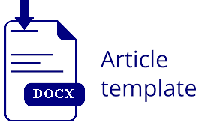Physical Properties Analysis and Quality Assessment of Gypsum-Kalsiboard Marketed in Ambon City
Abstract
The objectives of this research were to analyse the physical properties and quality assessment of Gypsum Kalsiboard in the Ambon city market so that the physical properties of the boards and their quality are analysed and controlled. The material used was composite board in the form of gypsum-kalsiboard panels with length of 244.0 cm, width of 122.0 cm and thickness of 3.5 mm. This experimental model used Completely Randomized Design (CRD) and assessment the quality by control chart evaluated using 3-sigma control limits through the Upper Control Limit (UCL) and lower control limit (LCL). The result showed that the average of overall density was about of 1.41 g/cm3, moisture content of 9.12%, water absorption of 25.21% and thickness swelling about of 1.91% which meets the standard limits required by SNI No. 03-6434-2000. Although by quality assessment there were several points that are above the upper control limit (UCL) and below the lower control limit (LCL), the physical properties values of this board were still within the tolerance limits because the condition of the board does not show significant changes such as those related to water absorption and thickness swelling, indicating that the board was quite stable and high dimensional stability after 24 hours of immersion.
Downloads
References
Grant, E.L. & Leavenworth, R.S. (1988). Statistical Quality Control; Volume 1. Text Book, Erlangga.
Haygreen, J.G. & Bowyer, J. L. (1982). Forest Products and Wood Science, An Introduction. Ames Iowa. USA: Iowa State University Press.
Hendrik. (2005). Manufacture of Gypsum-Cement Board from Acacia mangium Willd wood (Unpublished theses), Department of Forest Products, Faculty of Forestry, Bogor Agricultural University.
Hubson, U. (1987). Learn Management of Gypsum Into Chalk. Banda Aceh Industrial Research and Development Agency. Banda Aceh. Industrial Research Results Bulletin, 1(1), 7 -12.
Kharazipour, A. & Hutteeman, A. (1998). Biotechnologi production of Wood Composites. In: Bruce A., Palfrenyman J. W., Editor. Forest Product Biotechnology. United Kindom: Taylor & Prancis Ltd.
Lange, H., Kasim, A., & Seddig, N. (1989). Influence of Wood Species on The Setting of Cement and Gypsum. In: Moslemi, A.A., & Hamel, M.P., editor. Proceedings Fiber and Particle Boards Bonded With Inorganic Binders, 6, 33 - 42.
Ramirez-Coretti, A., Eckelman, C.A., & Wolfe, R.W. (1998). Inorganic-bonded composite wood panel systems for low-cost housing: A Central American perspective. Forest Prod J., 48(4), 62-68.
Sanusi, M. (1986). Gypsum quality and refining in South Sulawesi – Ujung Pandang. Chemistry Magazine, 36, 2–10.
Simatupang, M.H., Seddig, N., Habighorst, C., & Geimer, R. (1991). Technologies for rapid production of mineral-bonded wood composites boards. For Prod Res Soc, 2, 18-27.
[SNI] Standard Nasional Indonesia. (2000). Indonesian National Standard – Gypsum Board SNI No. 03-6434-2000
Subiyanto, B. (1998). The Effect of Cement After Pre-Treatment of Particles on Cement Bonded Particleboard Properties. Production Technology of Cement Bonded Particleboard from Tropical Fast Growing Species I. In: Hadi, Y.S., editor. Proceedings The Fourth Rim Bio-Based Composites Symposium; Bogor, 2 – 5 November 1998; 49 : 422 - 427.
Copyright (c) 2021 Rohny Setiawan Maail

This work is licensed under a Creative Commons Attribution-ShareAlike 4.0 International License.
Authors who publish with this journal agree to the following terms:
- Authors retain copyright and grant the journal right of first publication with the work simultaneously licensed under a Creative Commons Attribution License that allows others to share the work with an acknowledgment of the work's authorship and initial publication in this journal.
- Authors are able to enter into separate, additional contractual arrangements for the non-exclusive distribution of the journal's published version of the work (e.g., post it to an institutional repository or publish it in a book), with an acknowledgment of its initial publication in this journal.
- Authors are permitted and encouraged to post their work online (e.g., in institutional repositories or on their website) prior to and during the submission process, as it can lead to productive exchanges, as well as earlier and greater citation of published work (See The Effect of Open Access).









